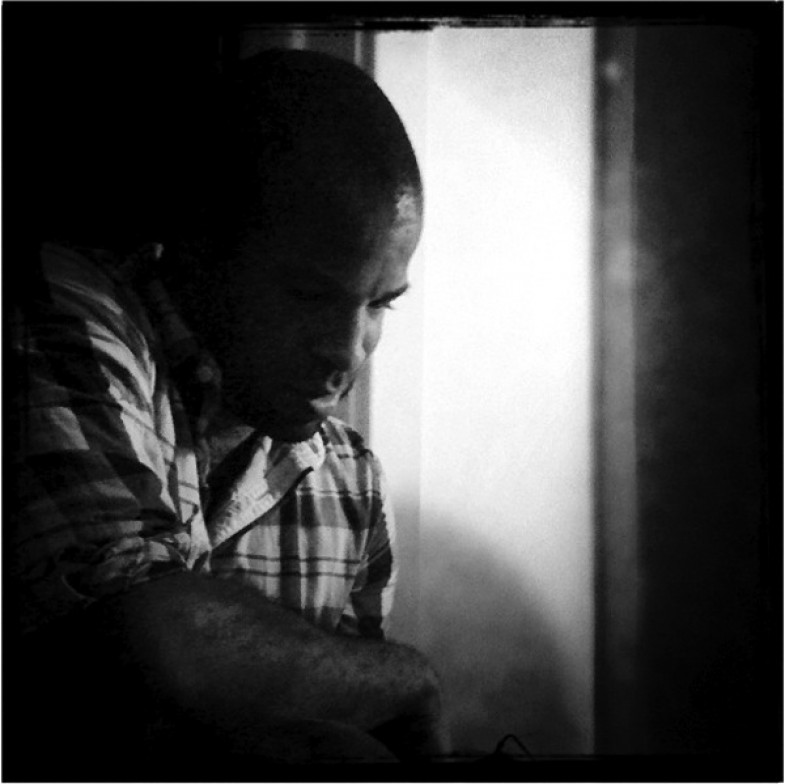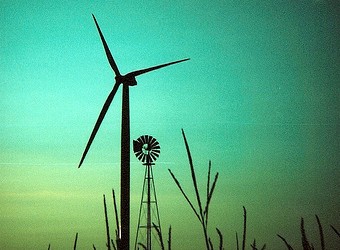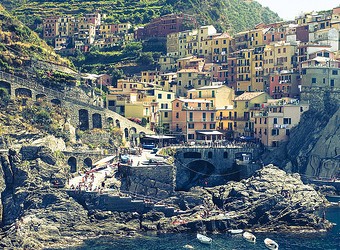Douglas Kearney is a poet, performance artist, and singer, as you can see on YouTube. His second manuscript, “The Black Automaton,” was chosen by Catherine Wagner for the National Poetry Series and published by Fence Books in 2009. It was also a finalist for the Pen Center USA Award in 2010.
Kearney has been an active force in unusual projects: unique hybrids of poetry, visual art, opera, music, and more. His chapbook-as-broadside-as-LP, “Quantum Spit,” was released by Corollary Press in 2010. Kearney has performed his poetry at the Public Theatre (New York) , the Orpheum (Minneapolis), The World Stage (Los Angeles, CA) and others. Kearney has been commissioned to compose poetry in response to art by the Weisman Museum in the Twin Cities, the Studio Museum in Harlem, Fellows of Contemporary Art and San Francisco Museum of Modern Art. Performances of Kearney’s libretti have been featured in Los Angeles, San Francisco, New York and Europe.
Kearney is a runaway train of imagination and energy. We enjoyed a wide-ranging conversation touching on everything from the X-Men to the challenges of completing an on-deadline manuscript after the birth of his twin daughters.
Here are a few excerpts; hop on the train.
Camille Gage, OTC Artist-in-Residence: Douglas you are a librettist, painter, singer, poet. The paintings on your website, which are your own, are very powerful. Do you identify primarily as a poet?
Douglas Kearney: Yes, I definitely identify first as a poet. The painting came out of a collaboration between Les Figues Press and LACE, the Los Angeles Contemporary Exhibition space. They wanted to see what writers would do if they were given gallery space to have a textual intervention using the wall as a canvas.
The idea was—and this ties in wonderfully with the idea of the commons—that during this residency anyone who came into the gallery was supposed to be able to interact with the work at some level, and possibly add to it. So I did a piece that was formally an extension of the work I was doing in my last book The Black Automaton. I had discovered while doing the book that I loved what I call, “performative typography poems.” But at some level they were a little too neat and I wanted a mess.
The BP oil spill coincided with the time that the exhibition was going to happen so I decided I would use paint and paint brushes to get more messiness happening.
I painted the word “spill” up at the top—about 15 feet up, and every time I would come into the exhibition I would take more black paint and obscure more of the text that I had written on the wall. And when I was gone, I left a box of chalk so visitors could add to or obscure text. Over the course of the exhibition I did three readings. The first time I read the original text that I’d put up, and each successive reading I would add what had been written in my absence. I recorded each reading and would play the last recording simultaneously as I would read and it was all about a growing messiness and accumulation the integration of all the contributions from visitors to the gallery.
The most fun thing about the process and this sense of collaboration was that whole section of texts were being obscured by paint so I basically vocalized them, tried to sound them. This resulted in a reading that often included long series of guttural sounds.
As an artist who does collaborative public work I can absolutely imagine this. You have to be in such an open space to allow this to happen, letting go of ego and outcomes.
Absolutely.
Tell me more about Quantum Spit, your self-described chapbook-as-broadside-as-LP.
Quantum Spit is a poem in four parts with ten different voices. It features the “performative typography” I used in The Black Automaton and other works. The brilliant editor of Corollary Press and poet Sueyeun Juliette Lee suggested that we put the poem in a record sleeve, which was a kick to design. She also didn’t have the pages bound, thus each one acts as a broadside. There was a run of 100 and they sold out pretty quickly.
You brought up the the BP oil spill, and creating work in response to a real-time environmental tragedy. What’s your take on the role of poetry in progressive activism?
Well, there’s a lot that poetry can’t do, but one thing it can do is provide a space for inquiry. In the X-Men comic books there’s this place called The Danger Room where super heroes can practice using their powers in an environment where they won’t get injured or injure anyone else. It’s a training facility. I think the arts are a kind of cognitive Danger Room where you and the audience can approach challenging ideas in a relatively safe space.
One of the things that struck me as I’ve read your work is how you use poetry—and how you use words—like an artist would use paint on canvas. Much of your work is very visual, sculptural, meant to be seen. I’m thinking of your contribution to The State of African American Poetry. You simultaneously construct-deconstruct-reconstruct that poem; it’s like we can look inside your head and see your brain at work.
That’s exactly what I’m interested in: using this type of typographical approach to map the mind at work. When I did the first one of these poems I called my wife in to see it, thinking it was either the most ridiculous or coolest thing I’d ever done—maybe both. She walks in and looks at it for, like, five seconds and says, “It’s like a map of hip hop consciousness.” It’s mapping associations, linkages, and I continue to think about and refine this way of working.
There’s a poem in Patter, the new book that’s coming out in 2014 called Blues Done Red, which was featured in the American Jazz Museum in Kansas City.
That poem, and the State of African American Poetry essay, are both examples of what I call “Trope Mapping.” What does a simile look like structurally? Or how does the Blues work if we were to map it?
There’s a website called Visual Complexity that collects information design graphics. It’s really stunning. So I take that same idea and ask, “How does a Blues repetition work?” We’ve seen it used in poetry for over a century as people like Langston Hughes adapted and used it for a lyric not necessarily meant to be sung. So how does it actually work and how does repetition affect meaning?
I explore that with Trope Mapping. I can explore syntax without the ligatures of a sentence. I can examine those proximities and discover that some of those proximities are sculptural or physical. This leads me to think about spatial relationships on the page or even outside the page. Add the layer of cultural relationships and it’s all an outcropping of hip hop and jamming.
In the span of a three-minute song you are looking at a breadth of culture, and it all functions together and there is history and tension, but it all holds. That kind of aural proximity is the model for how I think about aesthetic composition.
I’m looking at the State of African American Poetry piece and I’ve got to ask: How do you read this? How do you perform this?
All of these poems of mine were actually born in a fit of pique. My first book was not conspicuously performative. That book was pretty straightforward because we’ve been taught that things should:
Align
To
The
Left
I do readings where someone will come up to me and say, “Oh, I loved your poem but I don’t think I would have gotten it if I hadn’t heard you read it aloud.”
So then the performer side of my brain says, “Ha! In your face writer!” and the writer side of my brain says, “Damn you!”
So I began crafting poems that would be very difficult, if not impossible, to read alone without intervention like recordings or help from the audience. You can read this work, but to voice them is not possible alone.
The writer side of me tried to trip up the performer—to create something that can’t be performed. So every time I read something I have to ask the audience to participate, to co-create the experience. It can’t be done alone. I pass photocopies of the poems around and ask them to sequence the reading, to write their reading of the poem.
I then read it back they way they say it should be read.
I’ve also recorded each line of a poem on a separate track on my MP3 player and at readings I put the playlist on shuffle and have to react/interact with the recording of my voice, and it is different every single time.
I started reading the posts from your time as guest blogger with the Poetry Foundation. You reveal a lot about your process in those posts. You talk about taking six, eight or even ten years to write a poem, and yet you seem incredibly prolific. Tell me more about how you write.
I love talking about my process. Every time I reveal something about how I work I feel like the cat’s out of the bag and now I must take it even further. My process has had to evolve, not just because the cat’s out of the bag, but also because my life is changing. Three years ago we had twins. At the same time I had to finish a manuscript. I was trying to complete work while being very engaged in child rearing. So I had to figure out how to change my work flow and be productive and write meaningfully without having lots of time or staying up all night like I used to. It really drove me back to my journals. I returned to a much more improvisational way of beginning a new poem. I get everything down and then enter the process of revision. For a long time I’ve said that the first draft of a poem is not writing; you don’t start writing until you enter the revision phase. It’s like when a sculptor goes to the quarry to get rock and chisels out a piece of stone, that rock is not the sculpture – its rough material; this how I think of a first draft.
I love the revision process. For me it’s very dynamic. You can start surprising yourself, and that’s when the writing begins. There’s so much that won’t be immediately apparent to the reader. I want to create work that encourages the reader to have multiple contacts, to want to come back to the work over and over. If I don’t do that, I feel on some level like I haven’t succeeded. There has to be a layering.
If a person invests the time and energy to closely, closely read your work you don’t let them down. They can begin to see that there is a process undergirding the work; they can discover it. It’s like a contract with the reader. It’s not a burden; for me that’s the deal.
You can read poems by Douglas Kearney in the attachments below. They have been republished with permission from Fence Books.





